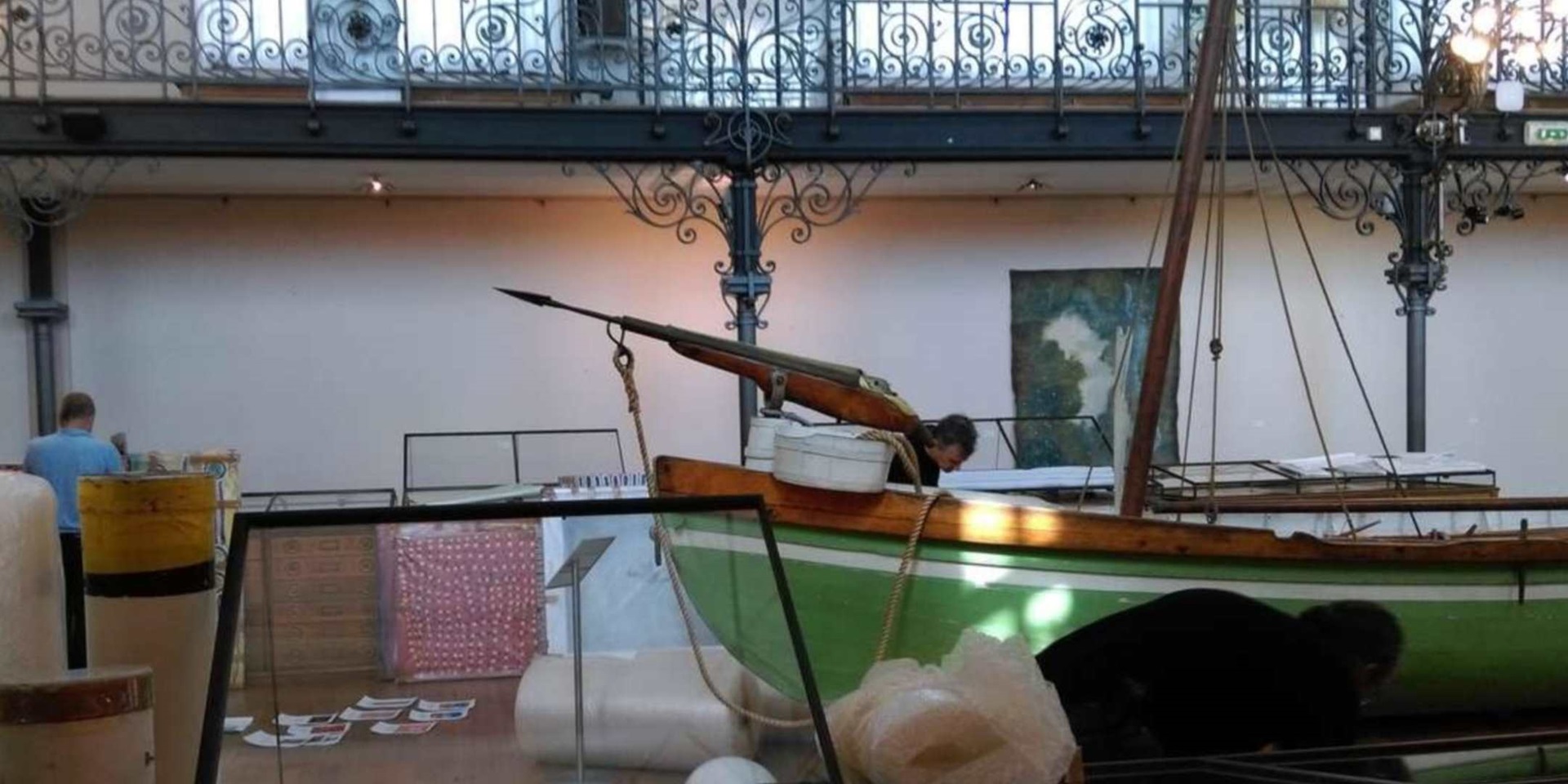

TABA NABA : Australia, Oceania, Arts by Peoples of the Sea exhibition at the Oceanographic Museum, Monaco. Image: Oceanographic Museum.
The Australian National Maritime Museum were asked to participate in TABA NABA – Australia, Oceania, Arts by Peoples of the Sea exhibition at the Oceanographic Museum in Monaco. Living Waters was a key theme of the exhibition developed by curator Erica Izett and featured items from our own Indigenous collection. Donna Carstens, Manager of Indigenous Programs at the Maritime Museum worked closely with Erica to select collection items that support the exhibition themes.
In 1889, Prince Albert I of Monaco displayed his own scientific collection at the Universal Expo in Paris. After such as positive reception to the Monaco pavilion, the Prince set in motion the establishment of the Oceanographic Museum which opened in 1910. The mandate of the Museum is to ‘enhance the knowledge of the richness and fragility of the oceans and promoting their sustainable management’.
Exhibition Curator, Erica Izett envisioned Living Waters to taking its conceptual approach from the themes of the Oceanographic museum as well as shifting the audience’s preconceptions of Aboriginal art. Izett wished to reframe the works within a contemporary art paradigm. The exhibition explored the relationships between saltwater and freshwater, fire and water as well as the roles of mythic ancestral figures such as the Rainbow Serpent, crocodile and the whale within their contemporary contexts.
The exhibition closed in early October and it was my job to travel to Monaco for the demount, to remove and pack the Maritime Museums objects ready for their return to Australia. The 17 works loaned included a several splendid examples of long necklaces and bracelets made of toothie, marieneer and cat teeth shells by well-known Indigenous artist Lola Greeno, a wonderful decorated cassowary feathered pearl shell ornament, a child’s war dance necklace and a necklace from a Saibai Island dance costume as well as an incised pearl shell pendant hung from a belt made of hair.
Each item had its own traveling box made by our wonderful conservators. Each box is made from archival acid free cardboard with spaces cut to the exact measurements of the works. Each cut out is lined with polypropylene foam and covered in parsilk allowing each object to be secured – gently – into place with cushions and cotton tape.
You might think a little over the top but have you ever had your suitcase damaged while in a plane’s cargo hold? The delicate nature of the works (tiny hand collected shells) requires careful handling and secure packaging to travel safely via airfreight.
This is just one outward loan from the Maritime Museum active outward loans program, lending to museums and galleries all over Australia and around the world. So next time your visit an exhibition on holiday keep an eye out, they might have borrowed an object from our collection!
Find out more about the Indigenous collection in our feature story on shellwork.
What to see more treasures of the collection? You can explore over 90,000 items from our collection online, anywhere, anytime.












